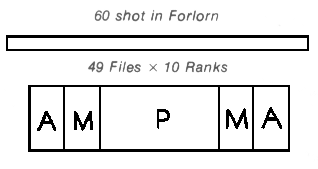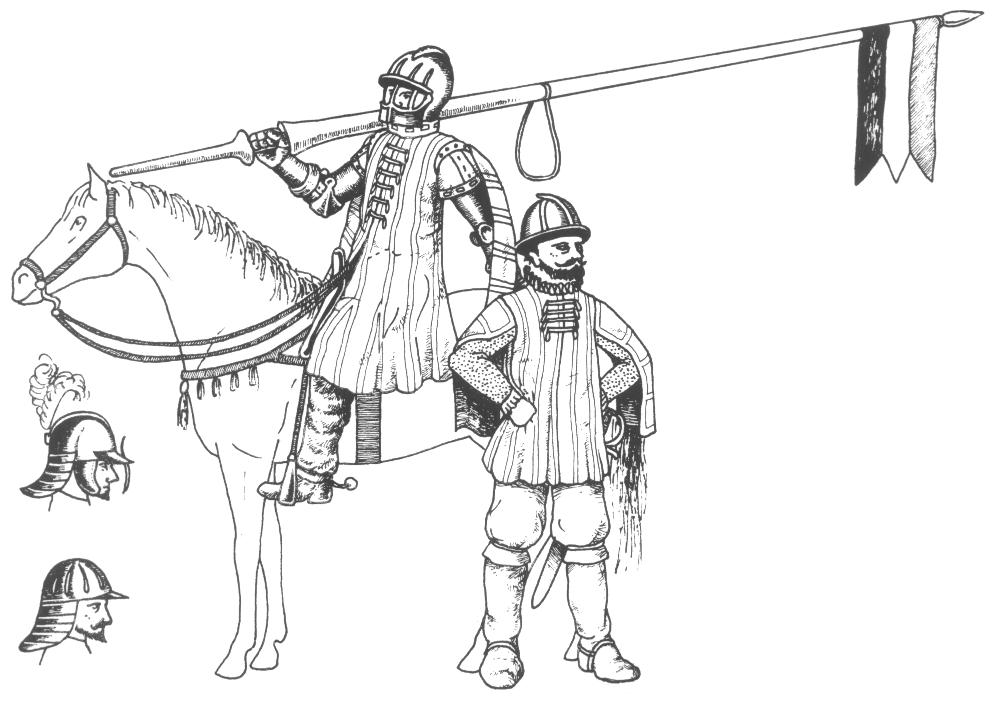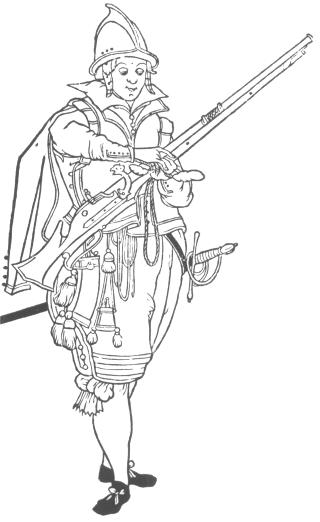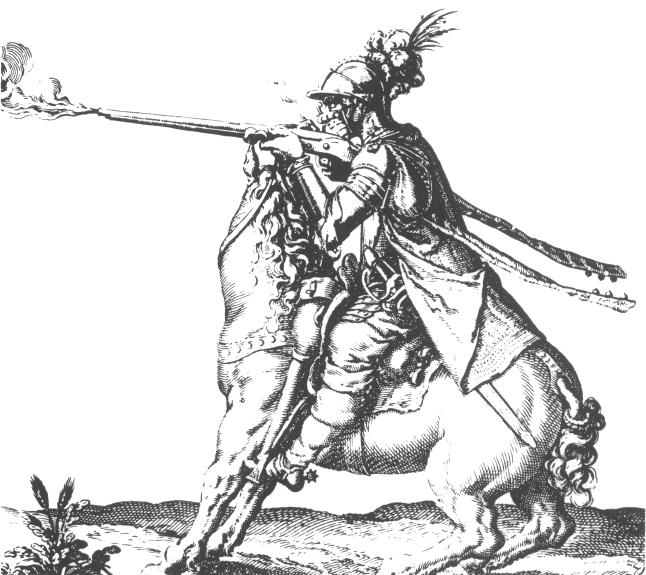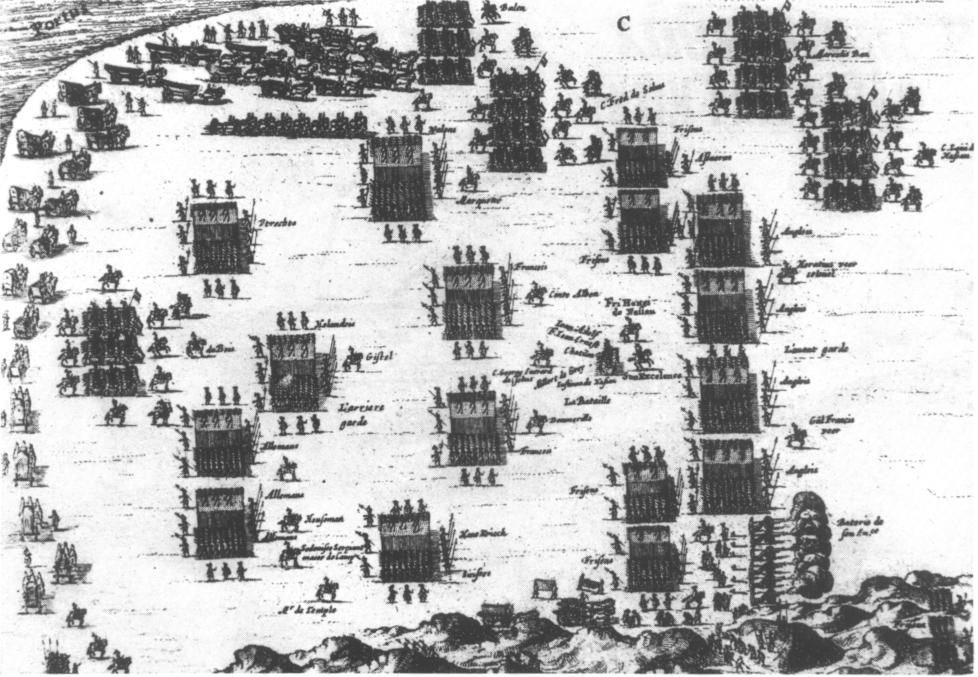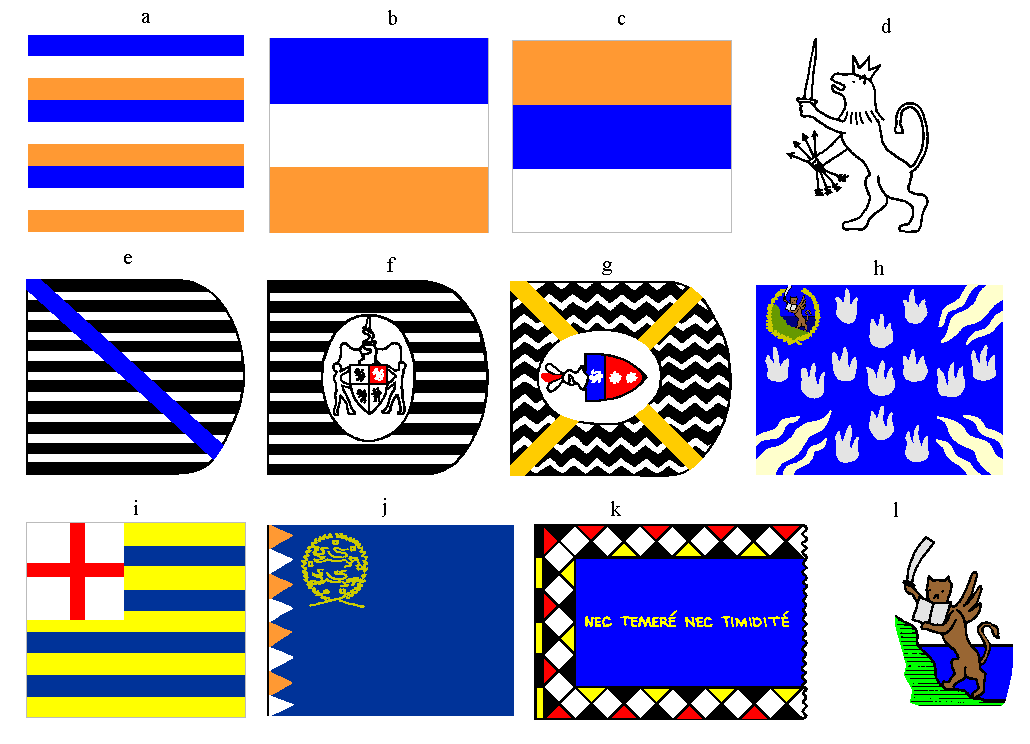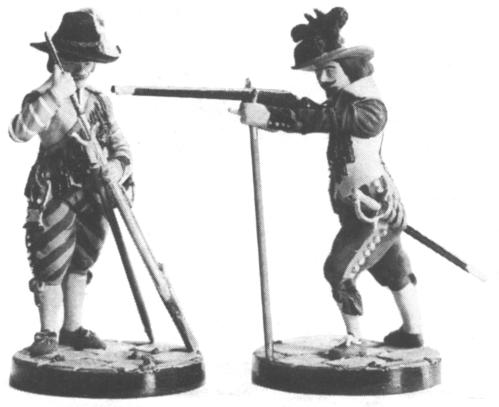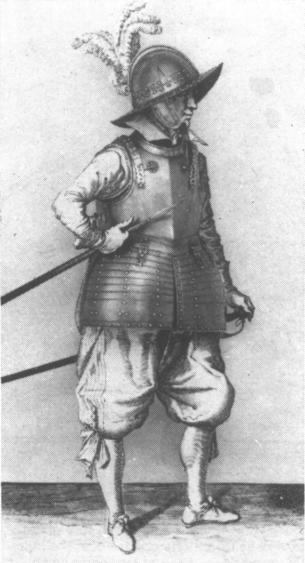
The photograph shows a Dutch pikeman's armour, circa 1630, in the Tower of London (Department of the Environment).
Arms and Armour of Knights and Landsknechts in the Netherlands Army Museum
by Jan Piet Puype & Harm Stevens
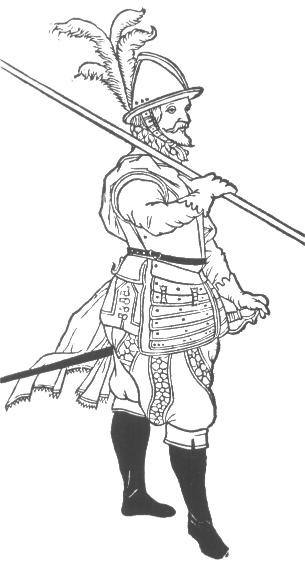
Dutch pikeman, late 16th or early 17th Century.


